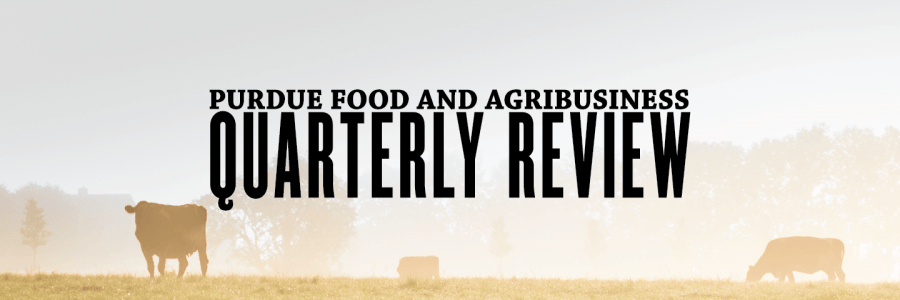Creativity in B2B marketing
 Article
Article
Baack, D. W., Wilson, R. T., van Dessel, M. M., & Patti, C. H. “Advertising to businesses: Does creativity matter?” Industrial Marketing Management 55 (2016): 169–177.
Reviewer
Dr. William Secor
Summary
This research shows that advertising creativity affects business buyer attitudes and buying intentions. Traditionally, business-to-business (B2B) advertising has been done in a way that emphasizes rationality and the benefits or features of the product/service. However, this paper shows that crafting a creative advertisement can result in three positive outcomes. First, potential buyers have better attitudes about the advertisement and brand. Second, the creative ad creates better perceptions about the product/service features. Finally, the creative ad induces buyers to have better behavioral responses like seeking more information and recommending the product/service. Importantly, the creative advertisement must be novel and relevant which takes time and money to create and implement and can be risky.
What this means for food and agricultural business
Recent research has shown that business buyers are influenced by marketing messages. After all, business purchase decisions are really made by people, not a “business.” Other research has shown that marketing efforts are more effective when a purchase decision is more important, complex, or uncertain. Business buying decisions in the food sector to a good degree, and in the agribusiness sector especially, tick off all three of these purchase characteristics. Therefore, marketing efforts will likely have a big impact on the decision that business buyers in the food and agribusiness sectors make.
The research in this article shows that creativity is a critical piece in making these marketing efforts more effective in a B2B setting. Because of this and because many food and agribusiness firms operate in a B2B selling environment, marketing managers in food and agribusiness firms should look into developing and delivering creative advertisements.
In order to develop and deliver these creative advertisements, food and agribusiness firms must take on risk and use resources. Creative advertising is risky because creativity is subjective and abstract. Creativity is industry and customer specific. What one customer finds creative another may find strange. For example, when traditional sources of information still reign supreme in the agribusiness sector, will non-traditional ways of advertising information work? Creative advertising risks your brand reputation and current customer relationships. This riskiness is also a major contributing factor for creative advertising’s costliness. A deep understanding of your customer is needed for the creative advertisements to be a success. To get this deep understanding, companies must invest in market research. Additionally, developing creative advertising may require a new set of skills that requires time from current employees or spending more money on your current marketing agency or perhaps a new agency altogether.
One of the least creative areas of B2B advertising in the food and agribusiness sectors seems to be at the product level. There is a tendency in this space to provide lots of detail about product features and performance. While these are certainly important to include in any marketing effort, this research shows that the delivery of this information in a creative way can tangibly impact a buyer’s behavior. For example, instead of providing a fact sheet of product specifications for a piece of farm or food-manufacturing equipment have a specific user story that integrates the specifications and features into it. This puts the potential buyer into the shoes of a real buyer and user of the product potentially reducing the buyer’s feelings of uncertainty.
One unique avenue for food and agribusiness firms to inject creativity into marketing efforts can be through salespeople. They have in-depth customer knowledge and can tailor their message to be novel and relevant (i.e., creative) to each customer. This approach may reduce the risks and costs discussed above that are associated with creative advertising. A review of your current advertising efforts may reveal other areas (e.g., business units, customer segments) and channels (e.g., print ads, television & radio ads, social media campaigns) where you can be more creative.
When deciding whether and how to incorporate creative advertising, there are key questions you need to ask yourself:
- Where can we be more creative in our advertising in the B2B context?
- What are the potential benefits and costs from developing and delivering these creative advertisements?
- What risks are we willing to bear to implement these creative advertisements?
The answers to these questions will require you to gather information on your own marketing efforts and your target markets. Moreover, it requires your organization to discuss your marketing efforts in a strategic way as many of the benefits, costs, and risks have long-term implications. Food and agribusiness marketing managers must balance the potential benefits against the costs and risks from these new creative marketing efforts.
RELATED POSTS:
A great moment for value-based sales in agribusiness
Value-based sales can empower companies to craft compelling value propositions, understand the customer’s business model and effectively communicate to stakeholders.
How can big data empower the development of new products?
Data is one of the most powerful resources for a company. It enables accurate decision-making and minimizes risk, ensuring greater revenue and sustainable growth.
Unlocking Growth: Exploring innovation dynamics in the agrifood sector
The future for the agrifood sector appears promising, driven by technological advances, strategic M&A activity and a growing commitment to innovation.

